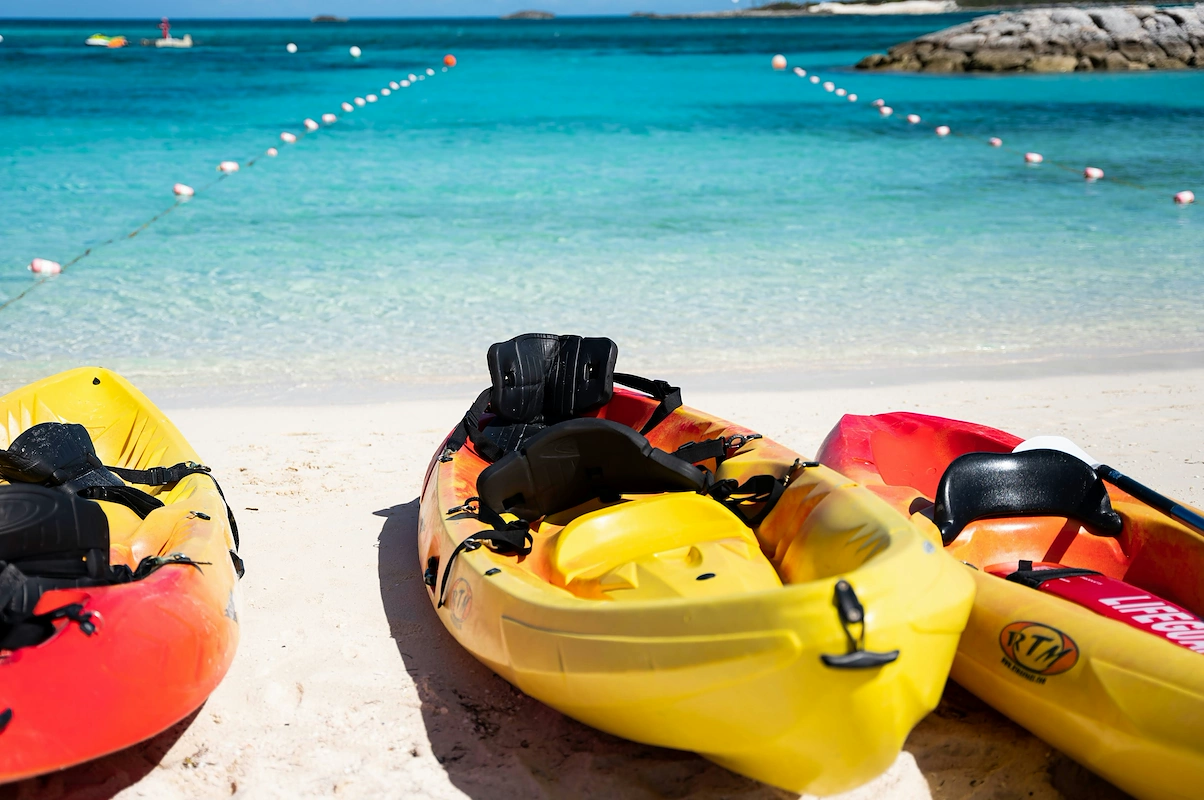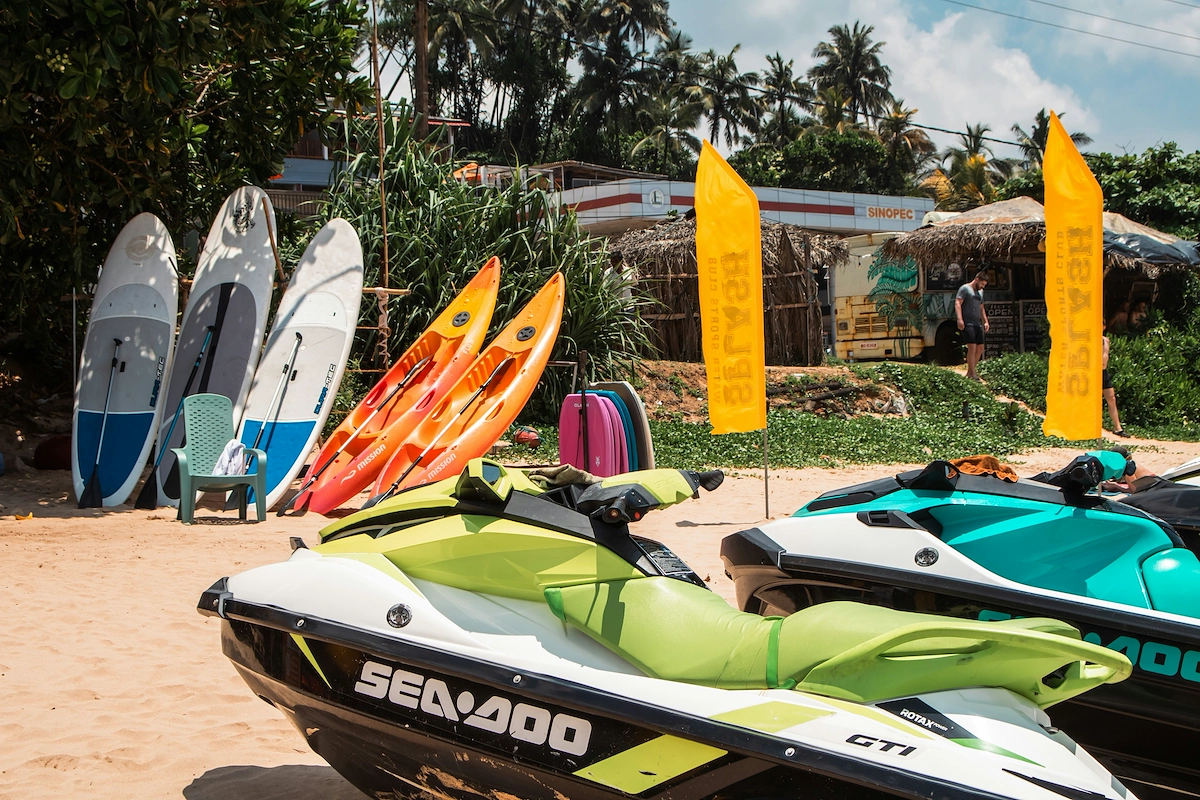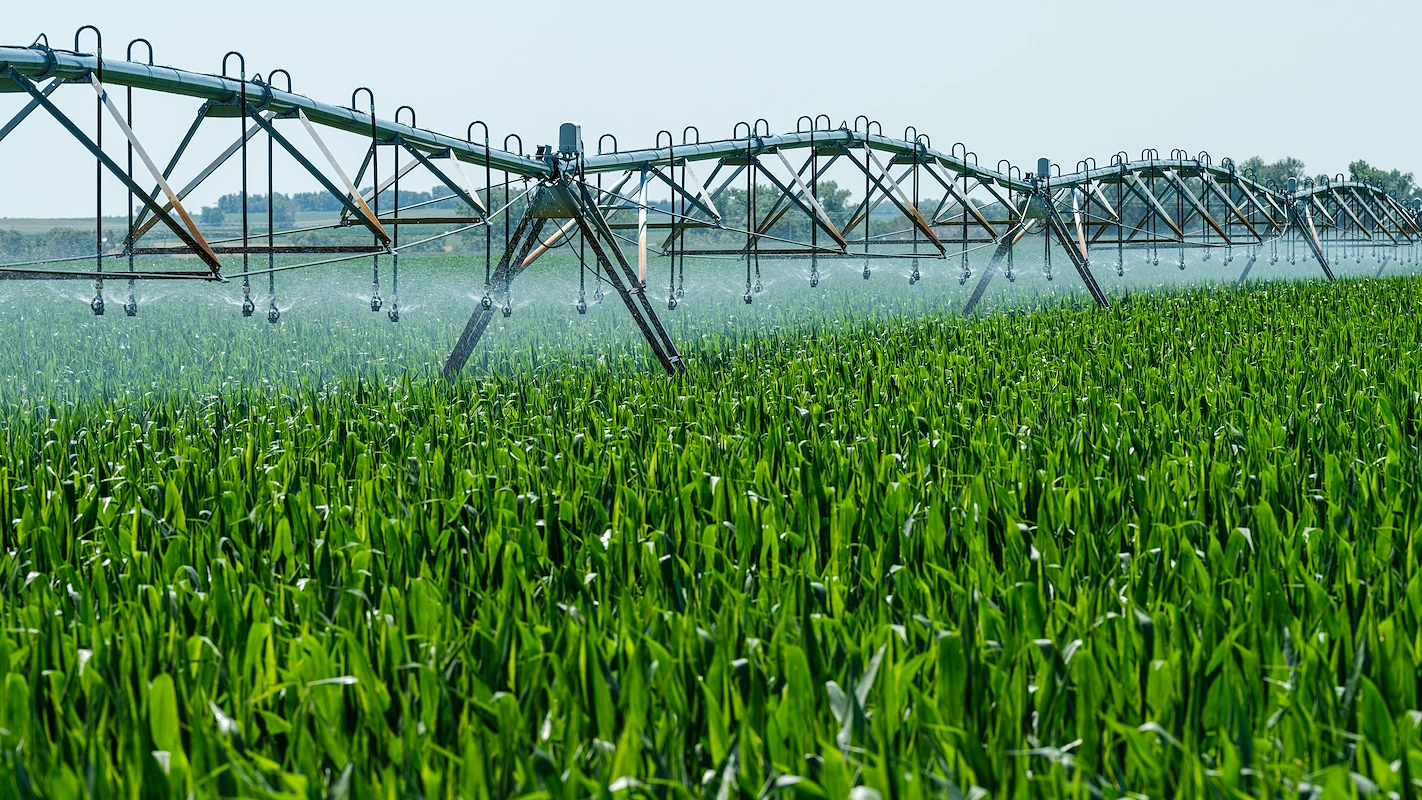Starting a frozen food business is an exciting venture that combines culinary creativity with business acumen. The market is worth billions of dollars, with steady demand from busy professionals, families, and restaurants looking for quality options.
This guide will take you through the practical steps of validating your business concept, securing funding, obtaining necessary permits, and building supplier relationships to help you launch a successful frozen food business in the U.S.
Step 1: Validate your concept and map out your plan
Define your niche and customer
First, pinpoint your ideal customer and unique product. You can test your recipes and price points through local farmers' markets or small focus groups. Use online forms like SurveyMonkey to gather feedback from at least 50-100 potential buyers before you commit significant capital.
Analyze competitors and calculate costs
Scout the freezer aisles of local grocery stores to see what sells. For broader market data, you can review reports on Statista. Note the pricing, packaging, and ingredients of direct competitors. A frequent misstep is to ignore indirect competition from meal kits or restaurant delivery services.
With a clearer picture of the market, it is time to talk numbers. Initial startup costs often fall between $10,000 and $50,000, though this varies with your production scale. Renting a shared commercial kitchen, for example, typically runs from $25 to $75 per hour.
- Commercial Kitchen Rental: $1,000 - $3,000 (first month/deposit)
- Licensing & Permits: $500 - $2,000
- Initial Ingredient & Packaging Inventory: $5,000 - $15,000
- Insurance: $1,200 - $3,500 (annual)
Here are 3 immediate steps to take:
- Conduct a blind taste test with your top three recipes against store-bought competitors.
- Create a spreadsheet to compare the pricing and packaging of five direct competitors.
- Draft a startup budget that uses the cost ranges for kitchen space, permits, and initial inventory.
Step 2: Set up your legal structure and get licensed
Choose your business structure
You might want to consider forming a Limited Liability Company (LLC). This structure protects your personal assets if the business faces legal issues. You can file for an LLC through your state's Secretary of State website, with fees typically ranging from $50 to $500.
While a sole proprietorship is simpler, it offers no liability protection. Once your business grows, you can elect for your LLC to be taxed as an S Corp, which can offer tax advantages. It is a good idea to consult a CPA to make this decision.
Navigate food safety regulations
The FDA regulates frozen foods sold across state lines, focusing on labeling and safety. Your state and local health departments, however, issue the primary permits. Expect to need a Food Establishment Permit, which can cost between $100 and $1,000 and take 4-8 weeks to process.
Many new owners do not realize their commercial kitchen must also pass a health inspection before any permit is issued. In addition, each employee who handles food will likely need a Food Handler's Card, which usually costs under $15 and requires a short online course.
Here are 3 immediate steps to take:
- File for an LLC with your state's Secretary of State.
- Contact your local health department for their specific food facility permit application.
- Review the FDA's food labeling guide to understand requirements for ingredients and nutrition facts.
Step 3: Secure your insurance and manage risk
Protecting your business starts with the right insurance. You will need General Liability and Product Liability coverage. A combined policy with a $1 million to $2 million limit is standard. Annual premiums for this often range from $500 to $2,500, depending on your sales volume.
Next, consider Commercial Property insurance. A major risk for a frozen food business is equipment failure. Ensure your policy includes spoilage coverage to protect you from losses if a freezer malfunctions. This is an add-on that many new owners forget to request.
If you have employees, Workers' Compensation is legally required in most states. You will also need Commercial Auto insurance if you use a vehicle for deliveries or sourcing ingredients. These policies protect you from employee injuries and vehicle accidents.
You might want to get quotes from insurers who understand the food industry. Providers like the Food Liability Insurance Program (FLIP), The Hartford, and Hiscox specialize in this area and can offer tailored policies.
Here are 3 immediate steps to take:
- Request a quote for a $1 million product liability policy from a specialized provider.
- Ask about adding spoilage and equipment breakdown coverage to your property insurance.
- Determine if you need Workers' Compensation or Commercial Auto insurance based on your plan.
Step 4: Find your location and buy equipment
Secure your production space
You will likely start in a shared commercial kitchen. Look for a space between 200 and 500 square feet that is zoned for commercial or light industrial use. When you review a lease, ask for a cap on utility costs, as freezers consume significant power.
A mistake some owners make is to sign a long lease without a test run. You might want to negotiate a 3-month trial period. Also, confirm the landlord permits the installation of high-amperage equipment like blast freezers before you commit.
Purchase your equipment
Your equipment needs depend on your product, but some items are common for frozen food production. To manage upfront costs, you can explore used equipment from restaurant supply auctions. Here are some typical price ranges for new and used gear.
- Blast Freezer: $3,000 (used) - $15,000+ (new)
- Commercial Upright Freezer: $2,000 - $5,000
- Vacuum Sealer: $500 - $2,500
- Commercial Food Processor: $800 - $3,000
With your space and equipment sorted, you can focus on suppliers. For packaging, a company like WebstaurantStore has low minimum order quantities (MOQs), sometimes as few as 250 units. For ingredients, local restaurant depots often offer better prices than wholesale clubs without large purchase requirements.
Here are 3 immediate steps to take:
- Tour two local commercial kitchens and ask about their hourly rates and freezer space.
- Get quotes for a used blast freezer from three different restaurant equipment suppliers.
- Compare the MOQs and pricing for packaging from two online suppliers.
Step 5: Set up your payment processing
Choose your payment solution
You will need a way to accept payments both online and in person. For direct sales at markets or events, immediate payment via card or digital wallet is standard. If you sell wholesale to restaurants, you might offer Net 30 payment terms.
Many new owners underestimate transaction fees. Most payment processors charge between 2.5% and 3.5% per sale, plus monthly fees. These costs can add up quickly, so you should look for a solution with transparent, low rates.
For businesses that need to accept payments on-site or on-the-go, JIM offers a streamlined solution. With JIM, you can accept debit, credit, and digital wallets directly through your smartphone. It is just a simple tap.
At just 1.99% per transaction with no hidden costs or extra hardware, it is particularly useful for selling at farmers' markets or managing direct-to-consumer deliveries. This rate is significantly lower than what many other providers offer.
Getting set up is straightforward.
- Get Started: Download the JIM app for iOS.
- Make a Sale: Type the sales amount, hit sell, and ask your customer to tap their card or device on your phone.
- Access Funds: Your money is available on your JIM card as soon as the sale is done. You avoid the wait for bank transfers.
Here are 3 immediate steps to take:
- Compare the total fees of two traditional payment processors with JIM's 1.99% rate.
- Decide if you will offer Net 30 payment terms for any future wholesale clients.
- Download the JIM app to explore its interface and features on your phone.
Step 6: Secure funding and manage your finances
Explore your funding options
You might want to start with SBA-backed loans. The SBA Microloan program offers up to $50,000 and is great for new businesses. Lenders typically look for a credit score above 680 and a detailed business plan. Interest rates often range from 8% to 13%.
Also, look into grants specific to food producers. The USDA’s Value-Added Producer Grant (VAPG) can help fund processing and marketing costs. Many new owners miss the tight application windows for these grants, so check the deadlines on the USDA website well in advance.
Plan your first six months of cash flow
You will need enough working capital to operate for at least six months before sales stabilize. For a small-scale launch, a budget of $20,000 to $40,000 is a realistic target. This buffer covers your initial inventory, packaging, kitchen rent, and other operational expenses.
A frequent oversight is to neglect a marketing budget. You should set aside at least $2,000 to $5,000 for initial marketing efforts like social media ads, local event sponsorships, or professional product photos. Without this, even the best products can go unnoticed.
Here are 3 immediate steps to take:
- Review the eligibility requirements for an SBA Microloan on their official site.
- Research the next application deadline for the USDA Value-Added Producer Grant.
- Draft a six-month operating budget that includes inventory, marketing, and rent.
Step 7: Hire your team and set up operations
Build your kitchen crew
Your first hire will likely be a part-time Kitchen Prep Cook. This person handles ingredient prep, cooking, and packaging. Expect to pay between $15 and $25 per hour, depending on your location and their experience.
Each employee needs a Food Handler's Card, which is a quick online course. You might also want to get a Certified Food Protection Manager (CFPM) certification for yourself to oversee safety protocols. A mistake some owners make is to classify hires as contractors; always treat them as employees.
Manage schedules and labor costs
Once you have a team, you need to manage schedules. Software like Homebase or 7shifts helps you create schedules and track hours, often with free plans for small teams. This avoids confusion and last-minute staffing gaps.
As you grow, aim to keep your total labor cost between 25% and 35% of your revenue. This benchmark helps you price products correctly. Remember that your total labor cost includes payroll taxes and workers' compensation, not just the hourly wage.
Here are 3 immediate steps to take:
- Draft a job description for a Kitchen Prep Cook, including pay range and responsibilities.
- Check your local health department's website for Food Handler's Card requirements.
- Explore the free plans for scheduling software like Homebase or 7shifts.
Step 8: Market your products and find customers
Build your digital storefront
Your first move should be on social media, particularly Instagram and Facebook. High-quality photos are non-negotiable. Many new owners hurt their brand with poorly lit pictures. Use natural light and show behind-the-scenes content to build a following.
Once you have content, you can run targeted ads. You might want to set a daily budget of $10-$20 to start. Target users by location and interests like "organic food" or "meal prep." For direct sales, aim for a Customer Acquisition Cost (CAC) under $25.
Create local buzz
You can also build a customer base through local partnerships. Offer to do in-store demos at specialty food stores or collaborate with local gyms. A wholesale discount of 30-40% is standard for these arrangements, giving them an incentive to feature your product.
In addition, you can use email marketing to nurture leads. Collect emails at farmers' markets and send a weekly newsletter with special offers. With a platform like Mailchimp, you can expect an open rate around 20-25%, which is typical for the food industry.
Here are 3 immediate steps to take:
- Create an Instagram business profile and post three high-quality product photos.
- Draft an email to a local specialty grocery store to propose an in-store demo.
- Set up a free Mailchimp account to start your email list.
Step 9: Price your products for profit
Calculate your cost of goods sold (COGS)
First, you need to know exactly what each unit costs to make. This is your COGS. Add up the cost of all ingredients, packaging materials, and the direct labor needed to produce one unit. A mistake many owners make is forgetting to include a 5-10% buffer for waste.
Set your price with a target margin
With your COGS calculated, you can set your price. Most frozen food businesses aim for a gross profit margin between 40% and 60%. To use a cost-plus model, if your COGS is $3.50 per unit, a 50% margin means you would price it at $7.00 for retail.
Now, look at your competitors. Check the freezer aisle and online stores. Calculate their price per ounce to get a true comparison. If your price is much higher, you need a clear reason, like premium ingredients or unique branding, to justify it to customers.
Here are 3 immediate steps to take:
- Calculate the detailed COGS for your best-selling product, including a 5% waste buffer.
- Research the price-per-ounce of three direct competitors at a local grocery store.
- Apply a 50% gross margin to your COGS to determine a starting retail price.
Step 10: Maintain quality and scale your operations
Establish your quality standards
To maintain consistency, you can create a basic Hazard Analysis and Critical Control Points (HACCP) plan. This document outlines your safety procedures. A key part is keeping daily temperature logs for all freezers to ensure they remain at or below 0°F.
You might also want to track quality with specific metrics. Aim for a customer complaint rate below 1% and perform weekly taste tests on a sample from each product batch. A frequent misstep is to scale production without these documented checks, which can lead to inconsistency.
Plan your growth milestones
With quality systems in place, you can set clear benchmarks for growth. Consider hiring your first part-time cook when you consistently sell 75% of your weekly production capacity. If you hit that mark for three straight months, it may be time to look for a dedicated kitchen space.
As your orders increase, inventory management becomes more complex. You can use software like Katana to track ingredients and finished goods. This helps you forecast purchasing needs and prevent stockouts, especially when you start supplying wholesale accounts.
Here are 3 immediate steps to take:
- Draft a one-page HACCP plan that focuses on temperature control and sanitation steps.
- Set a specific weekly sales volume that will trigger the hiring of your first employee.
- Review the features of an inventory management system like Katana to see how it fits your plan.
Starting your frozen food business is a big step. Remember that consistency is your greatest asset; customers return for the quality they trust. You have the roadmap, so now it is time to get cooking and build your brand one meal at a time.
And when you make that first sale, getting paid should be simple. JIM turns your smartphone into a card reader, letting you accept payments for a flat 1.99% fee with no extra hardware. Download JIM to get started.















